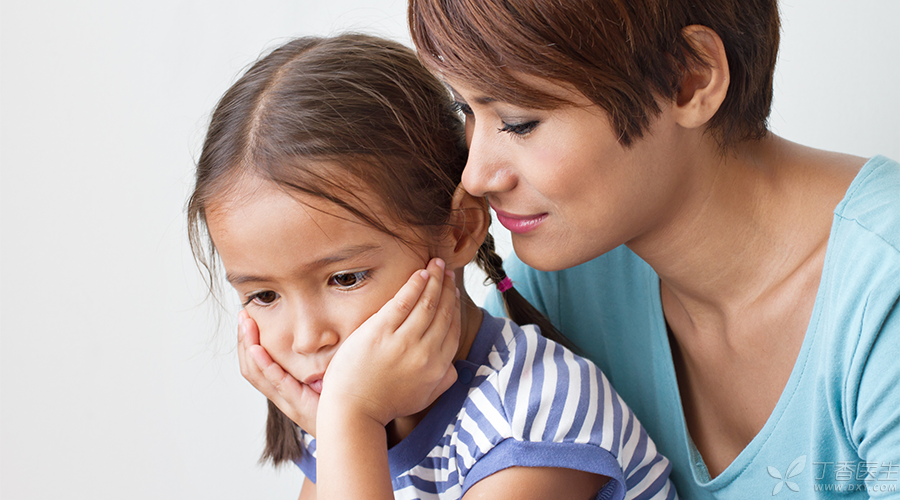
In addition to a high IQ, every parent wants their children to have a high EQ, especially in interpersonal communication. Indeed, EQ is a key factor in determining whether a person can adapt well to society and communicate with others [appropriately].
So, as parents, how can we improve our child’s emotional intelligence and make him a “social talent”?
Today, I’d like to share with you how to improve children’s emotional intelligence from social skills and emotional management in cultivating children’s interpersonal communication.
I. Social Skills
We all know that good social skills can enable our children to obtain good social relations in the future, and social relations, to a large extent, also affect the future development.
So as parents, can we do some what to effectively improve our children’s social skills?
Let’s look at this case:
My children often play pranks. Once I listened to a concert, there was a little sister in front of me. At halftime, he especially wanted to play with that little sister. However, he did not go over to play with others gracefully, but pulled their braids and ran away quickly. This made people very annoying and embarrassed me. What should I do?
In this case, On the surface, the child looks very naughty, but in fact, he just wants to get the attention of the little sister and play with her. However, the child lacks some social skills. In order to attract the attention of the little sister, he pulled the braid, but did not know what to do next, so he had to run away.
Obviously, this behavior is inappropriate. So, how can we teach our children the correct social methods?
Communicate with your child and let him understand that what is the right social method. You only need to do the following five steps:
1. Empathy
No child is born [Xiong Haizi]. Our children don’t want to disturb others intentionally. Most of the time, children just don’t know that their actions will make each other feel what.
For example, in the above case, as parents, we can communicate with our children in this way:
[If one day, your friend Xiao Kai suddenly pulled a little sister named Tingting’s braid, he always pulled it and ran away. You look at it nearby, do you think Tingting will feel what? Is it depression? Angry? Or happy? ]
STEP 2 Inform the results
There will always be motives behind children’s behavior, but if we let children know that what they want will not be obtained through this bad behavior, children will naturally choose wiser behavior.
For example, you can ask the child: [Do you think Tingting will like to play with Xiao Kai if he does that? ]
3. Social evaluation
People are dominated by morality. If children know that the people around them will think this behavior is not good, they may also have worries when they want to do this behavior again.
You can say: [What do you think of Kai? Do you think he is polite? Or is it rude? ]
4. Accept your child’s feelings
When we feel understood, we are more willing to believe what each other is saying. Therefore, when parents communicate with their children, especially when they want to give their children advice, they must first let their children know that we understand them, so that children will be more willing to listen to us.
You can say: [Mom knows that Xiao Kai must want to play with Tingting, right? ]
Step 5: Looking ahead
In order for children to better remember the new behavioral suggestions they get after communicating with their parents, we must let children think about what to do in each specific step when they encounter the same scene next time, and children will have more motivation to change.
You can ask the child: [What do you think would be better if you were Kai? ]

II. Emotional Management
Emotion management includes two aspects, one is the ability to identify emotions, the other is the ability to control emotional behavior.
(1) Emotional Recognition
People are not born to recognize all other people’s emotional reactions, so we need to take the initiative to teach our children what kind of behavior they will have when other people have various emotions.
In this way, when other people’s emotions occur, our children will not be confused and do not know what each other is doing.
What is important is that we can help children better understand negative emotions through [words and deeds], and at the same time realize the rationality of the existence of [negative emotions].
When you have negative emotions, tell your child frankly.
Daily family life, quarrels between parents, anger at children and other emotions are inevitable. Although we all hope to control our emotions as much as possible in front of our children, most of the time, negative emotions are inevitable. After all, we are all human beings and cannot completely suppress our negative emotions.
Therefore, more importantly, when we have emotions, especially negative emotions, in front of our children, we should tell them frankly why we have such negative emotions.
For example, The child did poorly on one of the exams, Mother was not angry about it, Instead, calm down and help the children analyze the examination papers together. But the child was absent-minded when analyzing the examination paper. So the mother became angry. Throw the door away. At this time, the child may misunderstand that the mother is still angry because she did not do well in the exam. Therefore, we need to communicate peacefully with the child under the condition that each other is quiet, tell the child that he is angry because of what, express his demands for the child, and stop being angry about what the child should do next time.

In addition, we can also let children learn to recognize different emotional expressions in a relaxed and pleasant atmosphere through small games.
Emotion recognition games:
1. Explain the meaning and actions of various emotions to children,
For example, we can buy some cartoon pictures with different emotions. When I saw an angry face, We explain the meaning of anger to the child, and then tell the child that when angry, people will hold their fists tightly, close their eyes tightly, and exert their whole body nervously, and vent their anger in this way. When happy, people will clap their hands and laugh. This explanation tells the child that the appropriate behavior to behave when different emotions are generated is what.
Step 2: Start the game
Can father do it, mother and child to guess. For example, father does angry behavior, see who guesses this is what emotion first, mother and child. Then let the children do it, parents compete.
(2) Emotional Behavior Control
I’m talking about Emotional Behavior Control, Rather than [emotion control], Because the mood is coming, We basically can’t control it. If we just suppress our emotions, Sooner or later, there will be more serious outbreaks. Therefore, what we need to control is not the emotions themselves. We can be angry, we can be sad, and we can also be depressed. What we need to do is to control the behavior when these emotions occur, especially when negative emotions occur.
Let children learn behavior control, we can start from the following three aspects:
1. Accept children’s emotions and express their understanding.
Tell the child: [I know you are also very sad]; [I know you are also very uncomfortable] Wait. Although this sentence is very short, it shows your understanding of the child and the child will accept our next words more.
2, Clearly tell children not to do what
Our parents are often angry with their children because they have done bad behavior, and when the above steps are completed, we still need to get back to the point, tell our children not to be what next time, and clearly put forward our own requirements.
3. Tell the child that he can be a what now.
This step is something many parents forget to do when communicating with their children. Most of the time we only realize that we tell our children not to be what, but we seldom explicitly tell our children that they should be what.
For example, once my nephew came to my house as a guest, he was very excited and jumped around on the leather sofa in my living room. My heart is dripping blood ~ ~ ~ ~ the child told him to stop immediately and stop jumping when he saw it! So the child was very obedient and stopped there and stood motionless on the sofa. But after a while, he jumped up again.
So I gave my mother advice, let her gently come to the front of the child, grab the child’s shoulder, solemnly but gently tell the child: [Don’t jump on this sofa.] Then, I gave the child another option: [You can help your mother wash vegetables in the kitchen now, or sit quietly on the sofa and watch cartoons. Which do you like? ] The child was so happy that he went to the kitchen with his mother to wash dishes and did not jump on the sofa all night.

In addition, we can also train children’s emotional control ability through small games.
Emotional control games:
Through small games in emotion recognition, children can understand that different emotions will have different behaviors, and then they can be taught what kind of behaviors are the most appropriate for themselves when a specific emotion is generated.
For example, when children are angry, they should learn to express their anger in words instead of crying or littering.
Then, at ordinary times, you can ask the child from time to time: [Suppose you are angry now! What should I do? ] If the child can react immediately and do the right behavior, he can be given a point on the special scoreboard, and a reward can be given after a certain point is added in a week.
With the above game, children can form a conditioned reflex of appropriate behavior and corresponding emotions, and gradually strengthen children’s positive behavior.
Parents, use these methods to make our children social talents.
